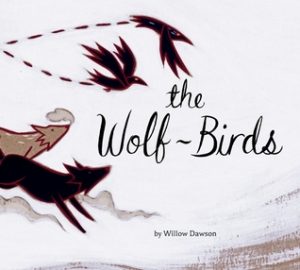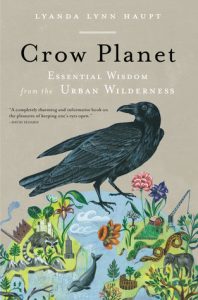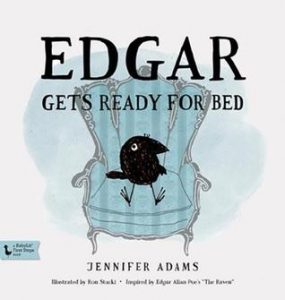 Have I mentioned I really like corvids?* They’re such beautiful birds, and they seem to have a pretty bad reputation all around that I’m not sure they deserve. Sure, they can be a bit scary, especially when you’re encountering a murder of crows, since they can grow quite large individually and it seems all the more as a group, and they’re scavengers so sometimes you might see one hunkering down over roadkill and tearing it to pieces, but they’re also such smart birds! (Or perhaps that makes them even more terrifying?)
Have I mentioned I really like corvids?* They’re such beautiful birds, and they seem to have a pretty bad reputation all around that I’m not sure they deserve. Sure, they can be a bit scary, especially when you’re encountering a murder of crows, since they can grow quite large individually and it seems all the more as a group, and they’re scavengers so sometimes you might see one hunkering down over roadkill and tearing it to pieces, but they’re also such smart birds! (Or perhaps that makes them even more terrifying?)
I’m going to start off with The Wolf-Birds, because this book truly shines in illustrating how wolves and ravens (can) form a symbiotic relationship that is mutually beneficial for both species, using text and illustration that likewise work together to tell the story. It’s a delightful picture book with beautiful illustrations and a truly lovely pace: the story ebbs and flows as the hunt continues for both the wolves and the ravens, showing how each animal plays its part in the natural progression of things. Willow Dawson completes the story with a page at the end with information about ravens and why they are also called wolf-birds, detailing the symbiotic relationship between wolves and ravens, where both groups benefit from the interaction, contrasted with parasitic situations where ravens simply steal from the wolves without giving back.
*I would, though, wouldn’t I?
 Living on a Crow Planet may sound slightly terrifying (and Haupt suggests this might be what the future looks like), but in truth, crows don’t appear to be as primary a subject as one might expect from a book called “Crow Planet”, though Lyanda Lynn Haupt certainly does pepper the text with information about these delightful corvids throughout. In fact, I’d hazard a guess and say that Haupt could probably have removed almost all reference to crows, or replaced them with almost any other bird, and the book would be much unchanged. Which is not to say that there isn’t much information about crows in this book, but I think the title is rather misleading for the purposes of conveying what the intent of this book actually is. Haupt is forthcoming about her reluctance to write an entire book on crows, and unfortunately, it does show. As a book about being an urban naturalist, though, this has the potential to be a great little volume!
Living on a Crow Planet may sound slightly terrifying (and Haupt suggests this might be what the future looks like), but in truth, crows don’t appear to be as primary a subject as one might expect from a book called “Crow Planet”, though Lyanda Lynn Haupt certainly does pepper the text with information about these delightful corvids throughout. In fact, I’d hazard a guess and say that Haupt could probably have removed almost all reference to crows, or replaced them with almost any other bird, and the book would be much unchanged. Which is not to say that there isn’t much information about crows in this book, but I think the title is rather misleading for the purposes of conveying what the intent of this book actually is. Haupt is forthcoming about her reluctance to write an entire book on crows, and unfortunately, it does show. As a book about being an urban naturalist, though, this has the potential to be a great little volume!
This is much more about the relationship between city dwellers and the bits of nature that share their space – crows being one of the most ubiquitous such neighbour* – and how, if only we were to focus our attention on what surrounds us, we should be able to finally see what nature we have at our fingertips and come to realize what part we play in wreaking havoc upon it. In other words, it’s on being an urban naturalist. Again, if you’re looking for a volume that focuses mainly on information about crows, from scientific inquiry to anecdotes to mythology concerning crows, which are all promised in this book, I’m afraid this might not be your last stop, alas, as the subtitle – Essential Wisdom from the Urban Wilderness – is a much better description of this book. In contrast, you might be interested in reading Corvus: A Life with Birds if you’d prefer anecdotes about living with corvids like rooks and magpies, as Esther Woolfson’s household has been home to both of these and more.
Now onto a bit of more specific curmudgeonly grumbling about this book. There’s a section in one of the chapters where Haupt talks about bird senses, including a specific passage where she talks about how the robin cocks its head to the side when trying to find food in the ground and Haupt notes that it’s a myth that the robin is trying to hear the worms: obviously, they’re looking for them, because vision is the main avian sense. Except having read Bird Sense, I’m not too sure about that. There aren’t any endnotes that tell you where Haupt finds her information (though there is a bibliography at the back), and all the footnotes are less references and more digressions, so you won’t be able to figure out too easily where she’s getting her information and how that compares to what Birkhead says in Bird Sense. I won’t settle the argument here (because I’m not going to go through Haupt’s bibliography line by line), but I will point out that there is at least one article published on an academic site (not to mention at least one entire book, namely Bird Sense) that challenges the line saying birds rely mainly on vision as their primary sense. The article suggests robins might be able to hear or otherwise sense (which, I might hasten to add, does not exclude visual cues as something robins can use while foraging for) delectable worms wriggling underneath the surface**.
I’ve also never seen baby crows fall at my feet, nor seen a crow suntanning, and I don’t think it’s for lack of watching (I love seeing crows and will turn my attention towards them at any given time). It might be the difference between crow density or behaviour here as compared to Seattle? I’m not sure. And while I’ve been dive-bombed by an Arctic Tern, I have yet to come close enough to a crow’s nest to become the target of their ire, even when it’s nesting season (whenever that is – the fact that I don’t even know because it has never happened to me strikes me as revealing, but of what I’ll leave to you). Now for all this, you might be wondering, “Karen, why on earth are you telling us about this book you don’t seem to have terribly fond feelings for?” (To which response I could justifiably give: well Haupt did write an entire book on crows – though not really, as we’ve established – despite her reluctance to do so and the fact that she doesn’t seem to have a whole lot of love for them. I’m going to be stopping short of this post.) I’m reviewing it because it seemed such an obvious candidate for someone who was interested in crows to read – the title is Crow Planet; I’m not sure how much more misleading that could be! – and it fell so short of what it seems to be about at first glance! As a book about being a naturalist in the city, I think Haupt does an ok job, so I’ll vouch for its potential there, but as a book about crows? It falls a bit short. I suspect somewhat like the baby crow falling down from its nest and awkwardly being unable to get back up. Though I’ve never seen that happen, despite Haupt’s persistent insistence that everyone has seen these things happen at least once, so I can’t actually even say.
I’m curious now though: has anyone else seen these things happen around Vaughan, or the GTA? Do you have any crow stories to tell?
*Though I’m never 100% sure whether I’m seeing a crow or a raven. I’m pretty sure I can differentiate between the two when I hear them – the croaking of ravens is rather startling where you expect to hear the slightly tinnier caw caw of the American crow (though I’m making an assumption here that the crows I usually see are American crows) – but seeing a large black bird flying overhead doesn’t give me personally enough information. I never remember which tail is wedge-shaped and which is not, or which one flies in a lumbering sort of way (though sometimes it does look like they’re not-quite-struggling to keep themselves airborne, so I suppose those must be the ravens?). Anyway, the point I’m trying to make here is: I’m not even sure that crows are the most ubiquitous birds people encounter in the city! What about pigeons? Or sparrows?
**Granted, the research is from 1995, but I don’t suppose robins have lost their hearing or other senses in the interim.
Now I suppose we should get moving onto something a little more positive!
 And of course, what post about corvids would be even close to complete without Edgar Allen Poe’s The Raven? But I don’t want to talk about the original just now, in part because I’m a little ashamed to admit that I’ve only just read it through the once, and only then in preparation for this post, so suffice it to say I don’t feel properly prepared to write about it in any way that does it justice. However, do know that you’ll be able to find The Raven in a few different places in our collection, and even a steampunk interpretation of it. There’s also The Raven, which is a movie that weaves in a murderer inspired by Poe’s works so that Poe must work together with a detective to stop them. But what really tickled me pink was seeing Poe’s The Raven being used as inspiration for a series of children’s picture books by the series title of Edgar: BabyLit First Steps (that link will take you to the Goodreads page, as we don’t have the full three titles). The protagonist is Edgar, who Gets Ready for Bed and is involved in a cautionary tale about the Tattle-tale Heart, and I’m pretty sure we had the Tree House of Usher at some point but I might have misremembered. While you might be a bit disappointed to find that there’s a bit less of the dark anguish of the original Telltale Heart or The Raven, if you see it as simply a jumping off point, these stories are rather just adorable. (Edgar Gets Ready for Bed does seem to go south quite a bit when Edgar asks his mother, “Do you still love me?”, but apart from that… and even that’s not all that dark!)
And of course, what post about corvids would be even close to complete without Edgar Allen Poe’s The Raven? But I don’t want to talk about the original just now, in part because I’m a little ashamed to admit that I’ve only just read it through the once, and only then in preparation for this post, so suffice it to say I don’t feel properly prepared to write about it in any way that does it justice. However, do know that you’ll be able to find The Raven in a few different places in our collection, and even a steampunk interpretation of it. There’s also The Raven, which is a movie that weaves in a murderer inspired by Poe’s works so that Poe must work together with a detective to stop them. But what really tickled me pink was seeing Poe’s The Raven being used as inspiration for a series of children’s picture books by the series title of Edgar: BabyLit First Steps (that link will take you to the Goodreads page, as we don’t have the full three titles). The protagonist is Edgar, who Gets Ready for Bed and is involved in a cautionary tale about the Tattle-tale Heart, and I’m pretty sure we had the Tree House of Usher at some point but I might have misremembered. While you might be a bit disappointed to find that there’s a bit less of the dark anguish of the original Telltale Heart or The Raven, if you see it as simply a jumping off point, these stories are rather just adorable. (Edgar Gets Ready for Bed does seem to go south quite a bit when Edgar asks his mother, “Do you still love me?”, but apart from that… and even that’s not all that dark!)
And as always, here’s a list of what has come and what is to come in this series (there’s only one installment left!):